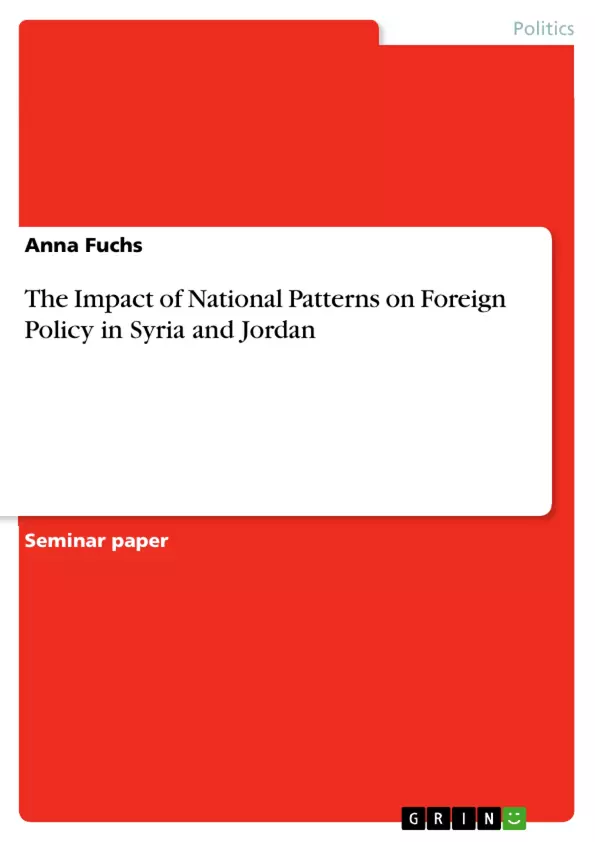The foreign policy of many states in the Middle East recently shows a tendency towards Western orientation. Since the monarchies of the region, like the Gulf monarchies or Jordan, have more in common with Western states than with radical Arab states, their foreign policy relations have always been more Western-orientated than those of other states in the Middle East. However, even some of the non-monarchical states, such as Syria, now pursue a policy of openness to the rest of the world. This leads to a similar Western-orientation in Syria and Jordan which is caused by various national patterns.
Inhaltsverzeichnis (Table of Contents)
- Introduction
- The Impact of Subset National Patterns on Syria's and Jordan's Contemporary Foreign Policy
- The Political System
- Categorization of Political Systems in the Middle East
- Syria
- Jordan
- The Economy
- Economic Features of the Middle East
- Syria
- Jordan
- The (Civil) Society
- Syria
- Jordan
- Conclusion
- Bibliography
Zielsetzung und Themenschwerpunkte (Objectives and Key Themes)
This paper aims to analyze the impact of national patterns on the contemporary foreign policy of Syria and Jordan. It explores how political systems, economies, and civil societies in these two countries have influenced their international relations, particularly their approaches to the West. The paper utilizes a synchronous comparison to highlight the similarities and differences in their foreign policy orientations.
- The role of national patterns in shaping foreign policy
- Comparison of Syria and Jordan's foreign policy orientations
- The impact of political systems on foreign policy
- The influence of economic factors on international relations
- The role of civil society in shaping foreign policy decisions
Zusammenfassung der Kapitel (Chapter Summaries)
- Introduction: This chapter sets the context for the analysis by outlining the growing trend of Western orientation in Middle Eastern foreign policy. It highlights the contrasting political systems of Syria and Jordan, and the need to examine their national patterns to understand their foreign policy differences. The introduction also mentions Syria's shift towards the West following the collapse of the Soviet Union and Jordan's long-standing Western orientation.
- The Impact of Subset National Patterns on Syria's and Jordan's Contemporary Foreign Policy: This section delves into the specific national patterns influencing Syrian and Jordanian foreign policy. It starts by categorizing Middle Eastern political systems using Oliver Schlumberger's approach, distinguishing between bureaucratic-authoritarian and traditional-authoritarian systems. This section analyzes Syria's neo-patrimonial political system, characterized by a centralized presidential republic and the dominance of the Ba'th party. It then examines Jordan's monarchy and its long-standing Western orientation. The section also explores the economic features of the Middle East, highlighting the specific situations in Syria and Jordan.
Schlüsselwörter (Keywords)
This paper focuses on national patterns, foreign policy, Syria, Jordan, political systems, economic factors, civil society, bureaucratic-authoritarian, traditional-authoritarian, Western orientation, Middle East, synchronous comparison.
- Citar trabajo
- Anna Fuchs (Autor), 2010, The Impact of National Patterns on Foreign Policy in Syria and Jordan, Múnich, GRIN Verlag, https://www.grin.com/document/211617



